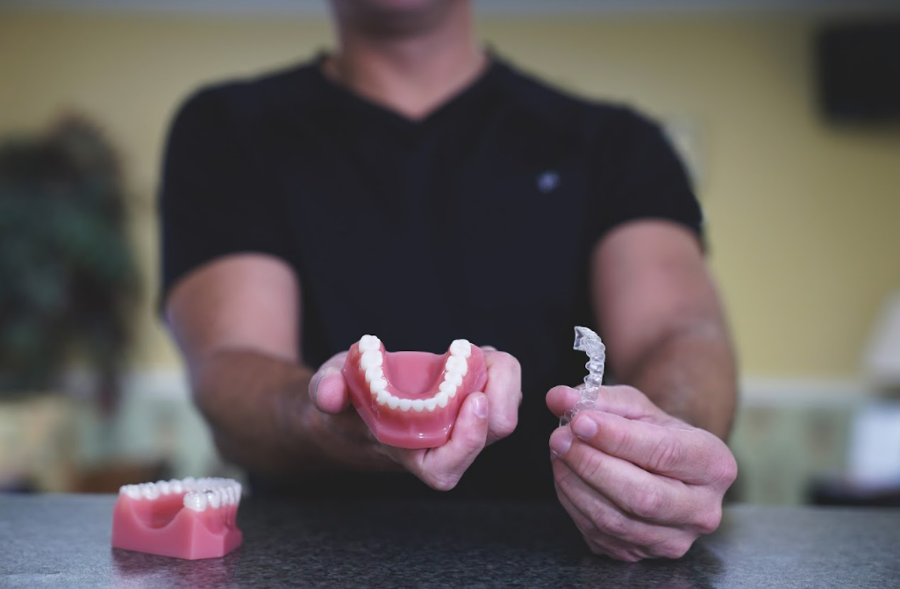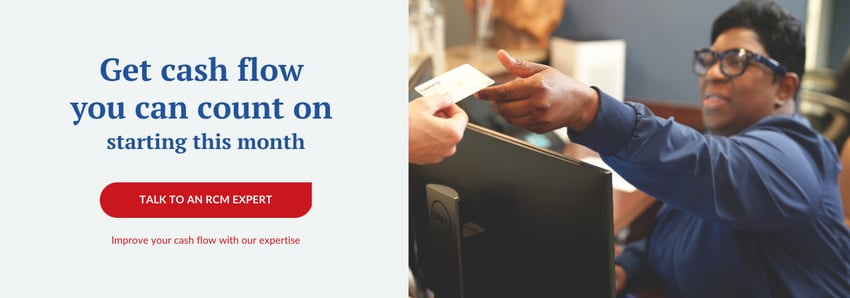3 top management tips for your multi-location dental practice


When it’s your job to keep your multi-location dental practices running smoothly, you need tips to help you succeed on a larger scale. There are many moving parts to a well-run dental practice, and these are multiplied by the number of locations you have. It can feel like an uphill battle when it comes to finding the best processes and strategies for financial success.
And with sound strategies, you can keep all your locations profitable and running well. Dental ClaimSupport works with dental practices of all shapes, sizes, specialties, and locations to improve insurance claims collections. Through working with multi-location dental practices, we’ve seen a few best practices - specific to multi-location dental practices - that set them up for success.
When you manage multiple dental practices, you’re managing multiple dental teams, billing systems, and dentists. The best thing you can do is stay consistent in the way you run each location. In this article, we’ll share 3 tips for well-run multi-location dental practices.
You’ll learn the importance of defining your corporate structure, developing standard operating procedures, and having all of your dentists credentialed with the same insurance companies.
1. Be sure your corporate structure is defined - roles and responsibilities
Because you are running multiple dental practice locations, you need to define your corporate structure. Even if you don’t think of your practices as corporate entities, the idea that everything has a place is important. Let us explain.
When we say corporate structure, we’re talking about an organization chart. This chart will define each team member’s role, responsibility, and department.
Depending on size and location numbers, here are some examples of roles:
- Owner
- Partners
- Associates
- COO
- Regional office manager
- Accountant
- Insurance coordinators
- And practice administrator, etc.
When you clearly define roles and responsibilities, everyone on your team is clear about what their jobs are. Everyone will know where they are supposed to be, and what they’re supposed to be doing. The office manager knows they are responsible for overseeing each part of the office.
Clarity about who-does-what can affect your revenue and the overall workflow of your practices. The clearer each role is, the easier it is for your employees to perform and be held accountable.
2. Establish good Standard Operating Procedures (SOPs) and regular training
Success for multi-location dental practices depends on good standard operating procedures (SOPs). After you define roles and responsibilities for each position at your dental practice - consider how each team member’s job is done.
An SOP is a document that describes step-by-step, how to properly perform a routine process in your organization.
Not only does it help you define your standards; it clearly explains how to meet them. SOPs provide guidance that reduces workplace stress, empowers self-direction, and also prevents costly mistakes.
When there are clear processes for every task at the dental practice, you’ll see an increase in efficiency and productivity. It can also create accountability with good checks and balances in place. Your performance evaluations will be more streamlined because everyone will know what is expected of their work performance.
SOPs will streamline your training process
Creating step-by-step process documents will also make training new employees much easier. When there’s an SOP for every task at the dental practice - new employees will always have a reference document for how to perform a task.
Even a SOP for onboarding new front desk team members and updating current team members should be in place. This will make it more efficient for new and current team members to stay up to date with dental insurance regulations, CDT coding, and other aspects of the dental industry that are constantly changing.
SOPs and training programs will make each dental practice location run like a well-oiled machine.
3. Centralize your dental billing
Each practice is going to have its own billing team. Try your best to make this billing process consistent across all locations.
For example, reconcile all payments from each practice location - cash, check, credit card, insurance payments, EFT/ERA payments - to make sure they actually reach the correct bank account.
Insurance aging reports can be run with many different parameters for each location - make sure you are getting the proper report information from each:
- Outstanding claims (by last sent date) by the insurance company
- Procedures not attached to a claim (they forgot to submit the insurance after they posted the services)
- Insurance claims unsubmitted (they created the claim and forgot to send it)
- Deposit reports (what money was collected) matched up to the bank deposit receipt
Keep track of the same parameters at each practice location so that you can compare and contrast the performance of each, and make changes where necessary.
-1.jpg?width=668&name=DSC00459%20(1)-1.jpg)
Credential each dentist for each location
Quick tip - credential each dentist for each location. This might seem tedious. We know credentialing takes time and paperwork, but if your locations are all at a reasonable distance from each other, enabling any dentist to serve any location will maximize your cash flow.
Even if your dentists don’t normally change where they work, it will be nice to have them credentialed so they can easily fill in for another dentist or for any situation that might otherwise halt business. Especially if you only have one or two dentists per practice - having someone available to cover an absent dentist can be helpful.
Remember - because you are credentialed with in-network plans at one office, don't assume you are in-network automatically at other office locations. It’s always better to have officially enrolled with the insurance carriers at each office location than to find you can’t accept insurance when you want to help another office.
Curious about more tips on running a successful dental practice?
No matter how many locations you have, every dental practice should have defined roles and responsibilities, SOPs, and a streamlined billing system.
With multiple practice locations - these tips can make the entirety of your business more organized. And since there are so many moving parts when running multiple locations, organization and efficiency are crucial for financial success. And defining your corporate structure saves your leaders time and stress.
Dental ClaimSupport provides fast, accurate claims collection for all your dental practices - no matter how many locations you have. Our expert billers make sure you receive full reimbursement, and that gives you and your team freedom to focus on your strengths such as patient care and relationships.
To learn more tips on how to run a successful dental practice, visit our Learning Center.
Related Posts
Dental revenue resources from Dental Claim Support

